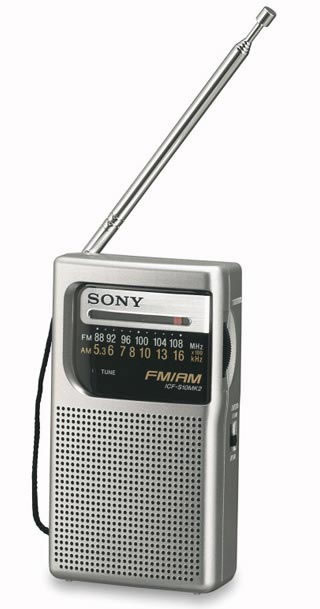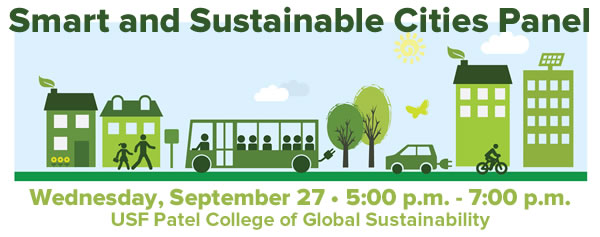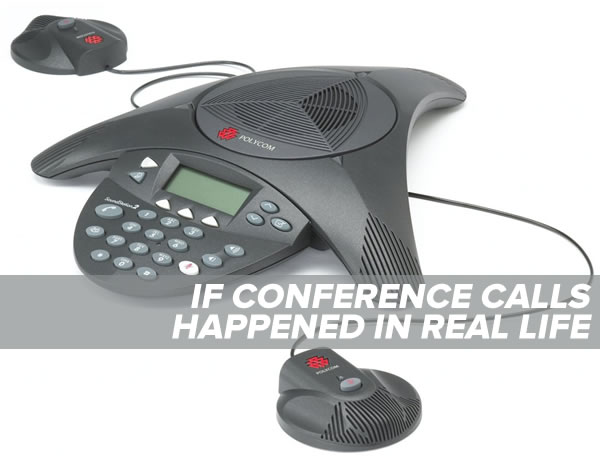
On the evening of Wednesday, September 27, my friend Taylor Ralph will be moderating a panel of experts in what promises to be “a fun evening with an amazing panel of experts on the hot topic of Smart & Sustainable Cities.”
What’s a smart city?
A smart city is one that makes use of information, communications, and internet of things technologies to manage infrastructure and service assets such as its water supply, transportation systems, power plants, law enforcement, hospitals, waste management, schools, and so on. It uses these technologies to interact engage directly with and improve communications its citizenry, monitor and control the city infrastructure, reduce costs and resource consumption, and adapt to changing circumstances.
A prime example of a smart city initiative is Amsterdam, which has a smart city initiative collaboratively developed by local residents, government and businesses. There are street with “smart lights” that adjust their brightness to current conditions and pedestrian usage, real-time traffic monitoring that’s broadcast to drivers so they know which routes to take and avoid, and a resident-developed app that allows parking space owners to rent them out for a fee and allows the city to determine parking demand and traffic flows.
What’s a sustainable city?
What’s a sustainable city? It’s one that manages it environmental impact and attempt to meet present needs with sacrificing the ability of future citizens to meet their own needs, and balances ecological, economical, cultural, and political factors to create an enduring way of life. With over 50% of the world’s populations living in cities and urban areas and urbanization increasing at almost 2% annually for the next few years, making cities sustainable is becoming an increasingly important endeavor.
Who’ll be on the panel?
Here’s what the event’s page says:
Panelists include a private developer from Tampa working on a large re-development in downtown Tampa and trying to make it WELL Certified; the sustainability lead from the University of Florida to discuss their smart, sustainable buildings and curriculum on campus; a vice president of a large technology company who will share the completion of one smart community in Japan and one in progress in Denver; a local Sustainability Manager from City of St. Petersburg, a leader in City of Orlando Smart City effort, and a vice president from Metro Development. Quite the list of experts!
There will be lots of time for questions and robust discussion.
Here are the panelists:
- Bahar Armaghani, LEED Fellow, LEED Faculty, Director, UF Green Building Learning Collaborative, and Lecturer, Sustainability and the Built Environment College of Design, Construction and Planning
- Kartik Goyani, VP of Metro Development
- Mike Hess, PE, LEED Fellow, Vice President, Smart & Sustainable Buildings, Panasonic Enterprise Solutions Company
- Sarah Mason, WELL AP, LEED AP, Wellness and Sustainability Analyst, Strategic Property Partners
- Charles Ramdatt, Co-Chair of City of Orlando Smart City
- Sharon Wright, AICP, LEED AP BD+C, ENV SP, Sustainability Manager, City of St Petersburg
And they’ll all be moderated by Taylor Ralph, LEED AP, President of REAL Building Consultants, native of Tampa, and all-round great guy.
When, where, and all that
The Smart & Sustainable Cities Expert Panel takes place this Wednesday, September 27th, from 5:00 p.m. to 7:00 p.m. at the USF Patel College of Global Sustainability (4202 E. Fowler Avenue).
Register here — the registration fee is $15 for USGBC members and students, and $25 for non-members.

There’s a certain pattern in pop music that I started to notice a couple of years ago. I mentally referred to it as the “Fifth-third uh-oh’s”, because it’s the lyric “uh-oh” sung repeatedly with the “uh” using the fifth note in the song’s key, and the “oh” using the third note. Patrick Metzger came up with a better term for a pop music pattern that’s been bugging me for the past decade: the Millennial Whoop.
Rather than describe it to you with words or show you the notes (both of which are meaningless if you haven’t studied any music theory), I can simply show you several examples of the Millennial Whoop in recent pop music:
(I find it amusing that the theme music at the end of the video also follows the Millennial Whoop pattern.)
Here’s a compilation of pop tunes that use the Millennial Whoop:
Here’s a follow-up compilation:
And here’s the song that features the most self-aware use of the Millennial Whoop (along with every other over-produced pop song trick): Andy Samberg’s Justin Bieber parody song, Fuck Off (warning: super-sweary; it even uses the “c-word”.)
And ads have caught onto the Millennial Whoop. Here’s an Uber ad, which I’ve set to start at the 25-second mark. You’ll hear the Millennial Whoop at 0:32:
And now, like me, you’ll never be able to unhear it.
Click the photo to see it at full size.
If you can think of other things to put in the squares, write ’em down in the comments!
Also worth checking out:
If conference calls happened in real life is one of those “it’s funny because it’s true” videos.
A friend of mine posted a linked to Bored Panda’s article, Maps Reveals Europe’s Most Racist Countries, And You Won’t Like It, which color-codes European countries based on how their people would feel if their children dated a black person, a Muslim, a Jew, or…a me!
I decided to take a look at the map for the question “Would you feel comfortable if your of your children was in a relationship with an Asian person?”, and wouldn’t you know it, I was totally taboo-ing it up a couple of hours outside Prague at André Fenton’s “Millennipalooza” party on December 31, 1999 / January 1, 2000:
Click to see the miscegenation map at full size.
I guess that like Hasan Minhaj, I’m the cure for racism.

And after they’d killed you, your officemates would treat the vegetables merely as utensils to get to that delicious creamy dip.

When Hurricane Irma closed in on the Tampa Bay area Sunday evening, the power went out at around 7:30, and soon afterward, cellular service became spotty and then disappeared entirely. However, we weren’t cut off from information about Irma because we fell back on a 1930s technology, FM radio, which is built into every smartphone, and accessible on many Android phones (including mine).

In the age of the smartphone, you might think your Android or iPhone can replace a radio receiver as a lifeline during a disaster. After all, while a radio receiver is audio-only and one-way, your smartphone can both send and receive text, audio, picture, video, and location information — but only if the cellular towers nearby are up and running. If the nearby tower is damaged, loses power, or gets overloaded, you’ll be cut off and left with the dreaded “No Service” indicator on your phone.

Consult just about any disaster preparation guide for a checklist of “must-haves”, and one of the items on that checklist will be a battery-powered radio. When phone and internet service fails, you can fall back on radio as long as you have batteries. (Better still, if you have a radio with a hand-crank generator, you don’t even need batteries.)
We have a nearly century-long tradition of radio stations providing vital information during disasters of all kinds. In the case of Irma, they did one better and teamed up with TV newsrooms. During the storm, many radio stations in the Tampa area teamed up with TV stations to provide continuous coverage of and information about the storm, such as where it was, how quickly and in which direction it was moving, and what to do. It was a valuable resource for many people, and it may have even saved a few lives.

You may think that you don’t own a portable FM radio, but chances are that you do. It’s just hidden away in your smartphone.
Just about every mobile phone maker — even the big ones who manufacture their own processor and graphics chips, such as Apple and Samsung — gets their cellular modem chipsets from a single manufacturer: Qualcomm. In fact, Qualcomm pretty much has a monopoly on these chipsets, which in addition to sending and receiving cellular signals, have an FM receiver baked in. You wouldn’t know it in the U.S., as fewer than half the smartphones have the FM receiver enabled, and they’re all Androids.
![]()
My Android phone is a Moto G4, and in addition to having an enabled FM receiver, it also comes “out of the box” with the FM Radio app, which simply provides a user interface for the FM radio capability. When the power went out in our part of Tampa on Sunday at around 7:30 p.m. and the cell service disappeared shortly after, I fired up the FM Radio app and we had updates on the storm’s progress all night long. In fact, I also used the phone’s FM radio and all day the next day — and there was still battery power to spare and the end. That’s because FM radio uses considerably less power than just about any smartphone function (and it uses no data at all!).
My iPhone doesn’t expose its FM radio capability, and it was useless as a source of updates until the cellular connectivity improved the next day, well after the storm had passed. I can’t say for certain, but I’ll just blame Apple designer Jony Ive, who’s never met a much-loved traditional feature that he didn’t like to remove. I get the feeling that FM radio is too distastefully old school to include as an iPhone capability, even though it’s already there.
While I experienced the usefulness of FM radio in smartphones during an emergency firsthand for the first time during Irma, it’s been clear to broadcasters and public safety officials — FEMA (the Federal Emergency Management Agency) included (see the video above) — that there are great benefits to unleashing this capability. The National Association of Broadcasters (NAB) has been lobbying to require the FM radio capability to be enabled in smartphones, and even Ajit Pai, chairman of the Federal Communications Commission (FCC) has been advocating for this (but he won’t go beyond advocacy). At an NAB event in February, he said:
“It seems odd that every day we hear about a new smartphone app that lets you do something innovative, yet these modern-day mobile miracles don’t enable a key function offered by a 1982 Sony Walkman.”
In Mexico, where there’s a strong radio culture (and a rise in non-commercial and community radio over the past decade), the Federal Telecommunications Institute (CIRT) approved a new rule in April requiring all smartphone manufacturers to enable the FM receiver. CIRT’s rationale was that in emergencies and disasters, having the FM capability would make it possible for people to get alerts and vital information when cellular networks failed. Mexico is the first country to pass such a law, and it’s hoped that other countries will follow suit.
Find out more
The go-to place for the movement to make the FM radio capability that’s already in our phones, waiting to be unleashed, is FreeRadioOnMyPhone.org. It has the latest info on the movement to enable FM radio on smartphones, including:
- How to get FM radio working on your Android phone
- How to contact Apple to ask them to enable FM radio listening on their phones
- How to contact the FCC and ask them to require FM radio be made available on phones
- The latest new about the movement
You may also find these articles of interest:
- Inside Radio: Emergencies Push FCC To Lobby For Smartphone FM
- Wired: Your phone has an FM chip. So why can’t you listen to the radio?
- NPR: The Hidden FM Radio Inside Your Pocket, And Why You Can’t Use It
- eMarketer: New Rules in Mexico Unlock FM Radio on Smartphones
- Recode: Trump’s FCC chief wants it to be easier to listen to free FM radio on your smartphone
- The Atlantic: Is that an FM radio in your pocket?
And finally, an article that needs to be pointed out because it’s dead wrong (and unsurprisingly, published by 2010-era Business Insider, from the time they were almost stealing content): Mandatory FM Radio: A Dumb Idea For Smart Phones, in which its clueless author says that it’s just a move to prop up the dying terrestrial radio industry.
As with other articles in this series, I’m including an appropriate music video:
Click here to see all articles tagged with “Hurricane Irma Report”.






